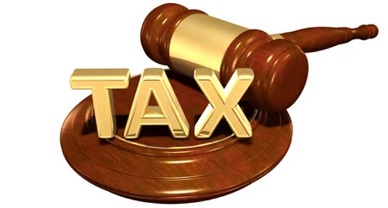EPFO vs Sunil Kumar
Introduction
In a recent decision, the Hon’ble Supreme Court of India, hearing appeals from various decisions of High Courts of Kerala, Rajasthan, and Delhi, which quashed most of the said amendments, examined the legality of some changes made to the pension scheme by the Central Government in 2014. The case was Employees’ Provident Fund Organisation & Another v. Sunil Kumar B. and Others.
[Image Sources : Shutterstock]
According to the Employees’ Pension Scheme, 1995 and the Employees’ Provident Fund and Miscellaneous Provisions Act, 1952, 8.33% of the 12% contribution provided by employers under the EPF Act is redirected to the pension fund. In accordance with the EPS Scheme, this corpus is used to compute the member’s monthly pension, which is based on their pensionable wage and service.
Vide its notification dated August 22, 2014, the Ministry of Labour & Employment, Central Government carried out certain amendments to Paragraphs 3, 6, 11, 12 and 14 the EPS Scheme, w.e.f. September 1, 2014 which mainly included the following:
- Computation of Pensionable Salary – As opposed to the average monthly drawn during a contributory period of service in the span of 12 (twelve) months before the date of exit, as it stood prior to the Amendment, the Amendment sought to compute pensionable salary based on an average monthly pay drawn during a contributory period of employment in the span of 60 (sixty) months preceding the date of a member’s exit from the pension fund.
- Maximum Pensionable Salary & Option to contribute over MPS – The MPS was raised from the previous cap of Rs. 6500 per month to Rs. 15000 per month. Existing members, as of 1 September 2014, who, at the discretion of the employer and employee, had been making contributions on a monthly salary above Rs. 6500/- could, however, exercise a new option jointly with the employer to make contributions on a monthly salary beyond Rs. 15000/-, and the pension for such members would be computed in accordance with such a higher salary. The 2014 Option was to be exercised by the members within six months of September 1, 2014; however, this deadline might be extended by another six months if the member could provide adequate justification. Failing exercise of the 2014 Option within such period, the Amendment provided that it would be assumed that the member has not opted for contribution over the MPS.
- Additional Contribution by Employees drawing Salary exceeding Rs. 15000 – Employees who were required to make additional contributions on monthly salaries of more than Rs. 15000/- per month were expected to do so at a rate of 1.16 percent.
Judgment
The SC, while hearing arguments of the parties vis-à-vis the validity of the aforesaid aspects of the Amendment, held as follows:
- The SC upheld the legality and validity of the amendments while reading down some of its terms in relation to the current EPS Scheme members.
- The SC reiterated that the benefit under a beneficial scheme like the EPS Scheme cannot be reduced by imposing a cut-off date, especially since the pre-amendment EPS Scheme did not contain any such cut-off date, and it agreed with the reasoning provided by its division bench in the case R.C. Gupta & Others v. Regional Provident Fund Commissioner, Employees Provident Fund Organization & Others. As a result, it was decided that the deadline for exercising the 2014 Option set forth in the Amendment was illegal. Consequently, the SC clarified that:
- On September 1, 2014, employees who had exercised the 1996 Option and were still working would automatically be entitled to the benefit of the 2014 Option.
- Employees who had not exercised the 1996 Option or had not been permitted by the EPFO to do so would now be eligible to exercise a joint option covering both the 1996 Option and the 2014 Option. The SC permitted this option to be exercised within a window of 4 (four) months following the ruling by exercising its jurisdiction under Article 142 of the Indian Constitution.
- Because the EPF Act did not include a provision for further contributions, the amendment’s imposition of them was unlawful. In order for the legislature to decide if it is necessary to propose suitable legislative amendments to create such contribution from some other valid source within the ambit of the EPF Act, the SC stayed the operation of this portion of the judgement for 6 (six) months. The SC decided that the Central Government was within its rights to change the formula used to determine pensionable wage and that it was neither illegal nor unconstitutional.
- The Amendments now clearly apply to exempt establishment employees in the same way that they do to employees of regular establishments. Therefore, the SC ordered that monies be transferred by exempted establishments between provident fund and pension accounts in the manner specified in the judgement for employees exercising or who are entitled to the benefit of the 1996 Option and the 2014 Option (as described above).
Conclusion
Before the second month of the four-month window the Supreme Court gave eligible members to choose higher contributions expires, the EPFO circular is issued. Employees who were EPS Scheme members as of 1 September 2014 but did not use their option to make higher contributions within the 6-month window given to them as per the EPS Amendment face another problem as a result of the limited window available for exercising the option (Non-Opting Members).
Only those members who chose to make larger payments over the six-month period while still being members on the specified date but were prohibited from doing so by an EPFO authority are the subject of the circular. It is for this reason that several employees and their representative bodies have already expressed concerns over the manner in which EPFO has dealt with the directions of the apex court, which had allowed such facility also to Non-Opting Members as of 1 September 2014.
Author: Tanya Saraswat, in case of any queries please contact/write back to us at support@ipandlegalfilings.com or IP & Legal Filing.
References
- Anshul Prakash, Epfo’s much-talked-about circular on Supreme Court’s pension judgment: Key Takeaways – Employee Benefits & Compensation – India EPFO’s Much-Talked-About Circular On Supreme Court’s Pension Judgment: Key Takeaways – Employee Benefits & Compensation – India (2023), https://www.mondaq.com/india/employee-benefits–compensation/1267226/epfos-much-talked-about-circular-on-supreme-courts-pension-judgment-key-takeaways#:~:text=In%20an%20important%20development%2C%20the,out%20the%20specific%20steps%20towards (last visited Jan 26, 2023).
- Prachi Bhardwaj et al., Supreme Court upholds validity of amended employees’ pension scheme but reads down certain provisions; explains applicability of Pre & Post Amendment Scheme SCC Blog (2022), https://www.scconline.com/blog/post/2022/11/05/amended-employees-pension-scheme-valid-provisions-read-down-applicability-explained-1-6-contribution-illegal-supreme-court-legal-research-service-law-updates-news/ (last visited Jan 26, 2023).



